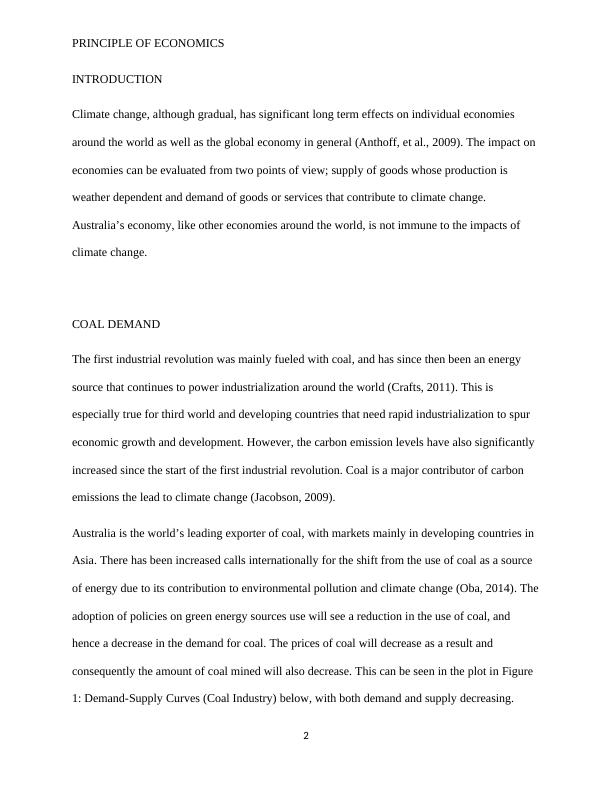Impact of Climate Change on Australia's Economy
Write a part of a ministerial briefing note for the new minister of the environment in the Australian government, explaining the consequences of climate change on Australia's production and consumption of certain goods and services and the impact on the macroeconomy.
6 Pages883 Words74 Views
Added on 2023-03-23
About This Document
Climate change has significant long-term effects on Australia's economy, particularly in the coal and beef industries. The demand for coal will decrease, leading to a decrease in GDP and an increase in unemployment. Similarly, the supply of beef will decrease, resulting in increased prices and inflation. These industries play a crucial role in Australia's economy, and climate change poses a continuous threat to the country's GDP.
Impact of Climate Change on Australia's Economy
Write a part of a ministerial briefing note for the new minister of the environment in the Australian government, explaining the consequences of climate change on Australia's production and consumption of certain goods and services and the impact on the macroeconomy.
Added on 2023-03-23
ShareRelated Documents
End of preview
Want to access all the pages? Upload your documents or become a member.
Effect of Drought on Macroeconomic Equilibrium of Australia
|7
|1207
|63
Impact of Drought on Macroeconomic Environment of Australia
|10
|2053
|308
Beef Industry of Australia
|14
|4153
|87
Impact of Drought on Macroeconomic Equilibrium in Australia
|12
|1973
|389
Australian Agriculture Industry Assessment 2022
|18
|855
|16
Impact of Drought on Macroeconomic Equilibrium in Australia
|8
|1407
|268



